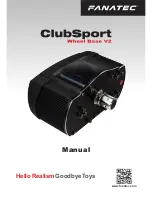
3
3.0 Unpacking and Installation
3.1
Unpacking the unit
Inspect the contents of the carton. Please notify the carrier immediately if there are any signs of
damage to the controller or its parts. Contact your distributor if any of the parts are missing. The
carton should contain a WDIS controller and instruction manual. Any options or accessories will be
incorporated as ordered.
3.2
Mounting the electronic enclosure
The WDIS series controller is supplied with mounting holes on the enclosure. It should be wall
mounted with the display at eye level, on a vibration-free surface, utilizing all 4 mounting holes for
maximum stability. Use M6 (1/4" diameter) fasteners that are appropriate for the substrate material of
the wall. The enclosure is NEMA 4X rated. The maximum operating ambient temperature is 122°F
(50°C). The enclosure requires the following clearances:
Top:
2"
Left:
8"
Right:
4"
Bottom: 7"
3.3 Installation
Once the enclosure is mounted, the metering pumps may be located at any distance from the
controller. The sensor may be placed up to 1000 feet (305m) from the controller. Shielded cable with
twisted pairs is required. Always route AC voltage wiring in conduit that is separated by 6 inches
from low voltage DC signal lines (such as the sensor signal).
Assembling the Sensor
CAUTION: Wear gloves and safety glasses during assembly of the sensor since the
electrolyte is a STRONG ACID. It is recommended to perform this operation over a sink with
running water available. After using, re-cap any remaining electrolyte until the next use.
1. Remove the black protective tube from the electrode tip, and clean just the
tip
of the working
electrode with the special abrasive paper supplied. Avoid touching the electrodes! Hold the pad
with the special abrasive paper and rub the electrode tip over it, holding the electrode at a slight
angle. Repeat several times at different angles.
2. Open the vial containing the membrane cap. Empty out the water. Make sure that only one gray
band is in the groove covering the vent hole in the membrane cap. Fill the membrane cap to the
top with the electrolyte fill solution. (The free chlorine membrane cap is shipped dry, and has only
one band)
3. Hold the sensor body vertically with the tip pointing down and SLOWLY screw on the membrane
cap until it is hand tight.
Be prepared for some electrolyte solution to squeeze out from the
vent hole in the cap.
4. Push the second gray band into the groove in the cap, making sure that the bands are smooth and
flush.
5. Rinse your hands, the sensor, and all surfaces contaminated with electrolyte solution with running
water. Check the sensor for leaks, especially at the membrane and the membrane cap threads. If
any leaks are detected, tighten the membrane cap or replace it.








































